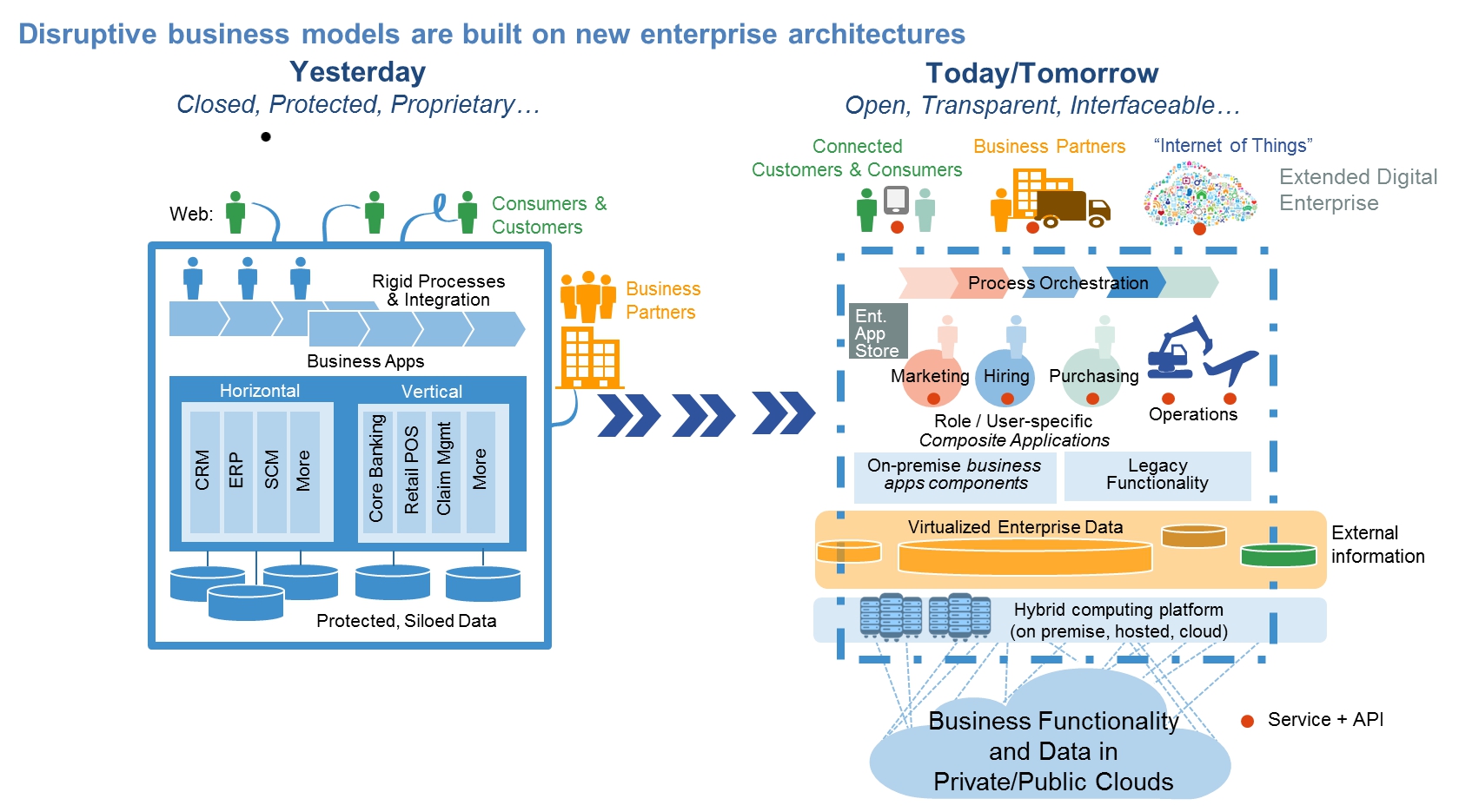
"We can’t wait for the IT department." That’s what I frequently hear from my clients when it comes to cloud. Business units go it "on their own" and acquire external cloud services tactically. Consequently, there’s no strategy. No alignment with the rest of the business – let alone IT. And in the end, the overall goals of the business are overlooked in pursuit of shorter term ones.
It’s clear: Companies need cloud strategies now. Or they risk pursuing myriad one-offs that may gain quick wins but won’t secure the basis for longer term success. But what exactly is a cloud strategy? There seems to be some confusion out there. Let’s start answering that question by describing what it’s not:
Cloud strategy is not….
– A technology or set of technologies
– Something that can be deployed "out of the box"
– An IT or IT Infrastructure-only project
– A proof of concept or pilot
– A one-time project
Cloud strategy encompasses the political, economic, psychological, and technological forces that drive an enterprise-wide master plan to get the most business value. It begins with a view of the business strategy and business model. And it considers the external forces impacting competitiveness. Constructing a solid cloud strategy entails:
– Engaging and aligning the C-Suite and Business and IT stakeholders to develop a cloud vision;
– Understanding the business value case;
– Designing the shift to the appropriate IT Model including enterprise architecture, IT operating model, application strategy, and IT service catalog;
– Ensuring foundational elements are in place for security, IT Service Excellence and other critical processes; and
– Providing the roadmap for execution of the cloud strategy and selecting the appropriate cloud configuration (private, public, and hybrid) that aligns with the business requirements.
The way of the dinosaur
Traditional business models are heading the way of the dinosaur. They’re riddled with barriers to growth thanks to protected and proprietary enterprise architectures where products, services and capabilities are dependent on the internal organizations, processes, technology and people.
Look at the most disruptive business models today. Airbnb, Facebook, Alibaba, Uber, to name a few of the more stellar examples. These obstacles just don’t exist. New business models are open, transparent and supported by digital technologies enabled by cloud services.
Businesses based on these new business models disrupt industries rapidly through their ability to:
– Execute with speed to change the game, capture markets, and grow revenues
– Engage customers through digital channels demanded today – (digital business processes, social, mobile and analytics platforms)
– Drive continuous, rapid experimentation and innovation of services and products with a mantra to fail fast — discard what does not work and gravitate to market successes
– Capture and mine the value from data gathering and analytics enabled by digital technologies to tune and adjust to market and customer opportunities
– Collaborate fluidly across employee and partner ecosystems, and integrate services from external partners and service providers in order to quickly expand the value chain
– Not just innovate and evolve but actually create new business models
Just as the steam engine drove automation during the Industrial Revolution, hybrid cloud is driving automation in technology. It is acting as a utility for companies to draw upon instead of building themselves. Most business models will be based on a hybrid model managing a mix of traditional IT, private cloud and public cloud — a subject we’ll explore in more depth in coming posts. But regardless of the particulars of the cloud strategy — it’s clear: To differentiate, disrupt. You need one. And you need one now.
Matthew Coates is a managing director in Accenture Technology Strategy, and Mark Grindle and Randolph Lawton are senior managers in the group.



